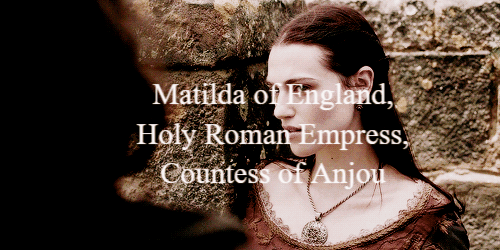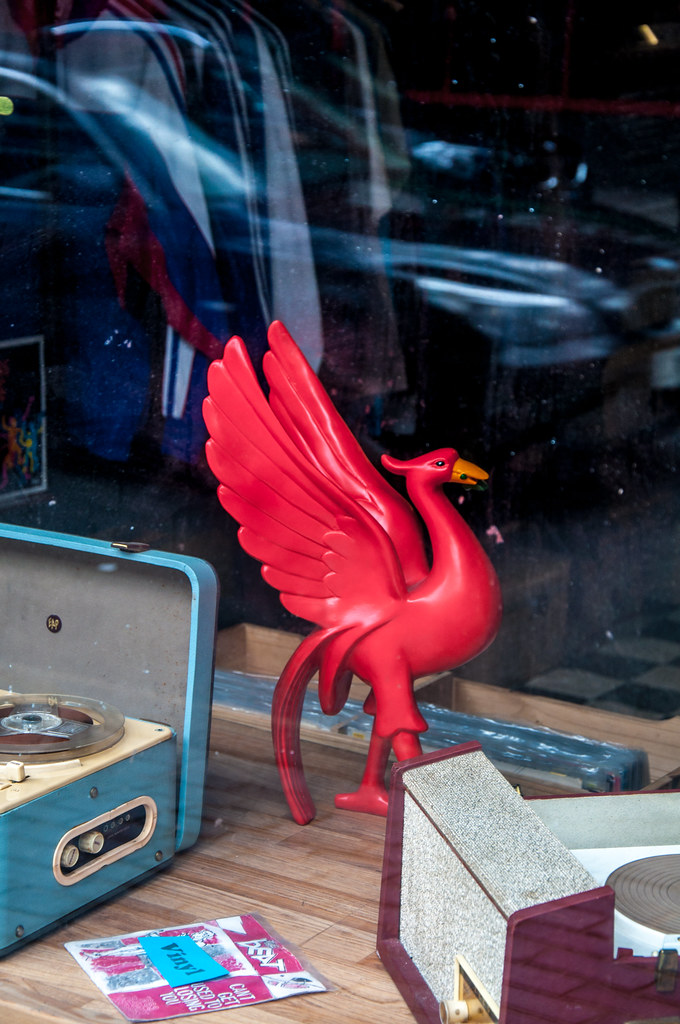#sprig planta
Text

From our stacks: Illustration "Planta Genista," a sprig of "broom"." From Grafton's Historical Readers. "Things New and Old" or Stories from English History For the Use of Schools. Book IV. Authorized for use in the Province of Quebec. By H. O. Arnold-Forster. Illustrated. Montreal: F. E. Grafton & Sons, 1896.
#planta genista#plantagenet#books#illustration#book#old books#flowers#broom#book illustration#detroit public library
46 notes
·
View notes
Note
Well, we got plots for Mr X/Sprig's Birthday, Mr X involves Anne and the Plantars going to the movies and Sprig's Birthday involves Anne trying to give Sprig a good birthday. The former sounds fun, though latter has some potential for angst given how Anne's last birthday turned out and her likely wanting to compensate by giving Sprig a good one.
Yeah, I could definitely see Anne being a little bit... tense when it comes to Sprig's birthday. It would be hilarious if things keep going in a manner that's vaguely reminiscent of what happened on her own birthday, and Anne is just steadily going insane over it.
6 notes
·
View notes
Text
Geoffrey Plantagenet, Count of Anjou

Geoffrey Plantagenet, known as 'the Handsome' was Count of Anjou, Touraine, and Maine from 1129 and Duke of Normandy by conquest from 1144. X
Geoffrey's nickname derived from a sprig of bloom, or Planta Genista, that he liked to sport in his helmet, an avid hunter he ordered acres of the broom (genet in French) to be planted to improve the chase. X
The chronicler John of Marmoutier described Geoffrey as handsome, red haired, jovial, and a great warrior. X
WELL, here is my drawing and take on him, I tried with the plant blossom on his hat, and I tried to keep him handsome and I drew him kind of cheeky ahahaha, the links to the sites I used to read up on his appearance are provided on the little X's. The cloak pattern is based off the image of him on his tomb in Le Mans

Please do not steal
25 notes
·
View notes
Photo




“It was clear that Matilda would need a new husband to bolster her claim to succession. As he had with William the Aetheling, Henry now sought an alliance with the counts of Anjou. He contacted Fulk V and negotiated a marriage alliance between Matilda and Fulk’s eldest son, Geoffrey.
On June 17, 1128, the couple was married in the Norman-Angevin border town of Le Mans. The Empress Matilda was twenty-six years old, her groom was fifteen. John of Marmoutier recorded that the marriage was celebrated ‘for three weeks without a break, and when it was over no one left without a gift’.
On his wedding day Geoffrey of Anjou was a tall, bumptious tenager with ginger hair, a seemingly inexhaustible energy, and a falir for showmanship. His fair-skinned good looks earned him the sobriquet Le Bel. Tradition also has it that he liked to wear a sprig of bright yellow broom blossom (Planta genista in Latin) in his hair, which earned him another nickname, Geoffrey Plantagenet.
John of Marmoutier later described him as ‘admirable and likable... he excelled at arguing... [and was] unusually skilled at warfare’. A week before his marriage, he had been knighted by Henry I in Rouen. He was dressed in linen and purple, wearing double-mail armor with gold spurs, a shield covered in gold motifs of lions, and a sword reputedly forged by the mythical Norse blacksmith Wayland the Smith.
As soon as the marriage was completed, Geoffrey became count of Anjou in his own right, as Fulk V resigned the title and left for the East to become king of Jerusalem. Despite all this, Matilda was underwhelmed. Geoffrey was eleven years her junior, and Normans saw Angevins as barbarians who murdered priests, desecrated churches, and had appalling table manners.
(...) Geoffrey Plantagenet had seemed to Henry I a necessary husband for his imperial daughter. The couple did not get along, but that was hardly the point. They argued and separated for the first years of their marriage, then settled down under Henry I’s guidance and did their political duty.
On March 5, 1133, at Le Mans, Matilda gave birth to their first son. The couple named him Henry, after the king whose Crown it was intended that he should inherit. The infant was baptised on Easter Saturday in Le Mans Cathedral and placed under the protection of St Julian. But it would take more than a saint’s protection to provide the child’s future. Within two years, everything that Henry I hoped for in his grandson would be cast into chaos and doubt.”
Dan Jones, “The Plantagenets. The Warrior Kings and Queens Who Made England.”
Fan cast: Katie Mcgrath as Empress Matilda, Ruairi O'Connor as Geoffrey Plantagenet, count of Anjou.
#Geoffrey Plantagenet#Geoffrey of Anjou#Angevin Empire#House of Anjou#Empress Matilda#House of Plantagenet#Plantagenet Dynasty#Normans#Norman Dynasty#House of Normandy#Henry II#Henry FitzEmpress#Plantagenets#Plantagenet#Dan Jones#Katie McGrath#ruairi o'connor
58 notes
·
View notes
Text
Snappers
Snapper of fire, lava cooling into basalt on their blackened skin, any scars they have are from the metal working they do, their eyes and insides glow red hot and they always seem cheerful. They know how to treat the metal and take their time. The best weapons and armor comes from the oldest snapper smiths
Earth snappers, the place they call home clings to them, earth dries to their haunches and their eyes are warm and kind. You cant quite descibe their color other than sunkissed comfort. They wander amid dry grasses and talk of days long gone, they gaze at the pillar and know they are safe.
Water snappers, equpped with gills for shallow water grazing and frilled wings, their colors are cool greys and purples and soft blues, they bask in the sun and hum idly among themselves. Their eyes are old and quiet. Fathomless. They have seen many ancient things and they wish to tell you of them all.
Nature snappers have moss growing on their backs and thighs. Their wings are albeit tattered and their colors vary from warm browns and yellows to electeifying greens. Their eyes glimmer in the sun and they wade in the shallow streams. They graze at low hanging fruit and young grasses, at night they lounge together under the stars, there is safety in numbers.
Shadow snappers hoast mushrooms on their shoulders and toads hitch rides on their noses. They are delighted with their smaller companions and don’t comply with the trickster nature of shadow. Rather they tell jokes and riddles. Amusing themselves with your gleeful laughter. They share their food and their place to sleep for they greatly enjoy talking to someone
Arcane snappers are flecked in pinks and vivid blues. Their eyes reflect the cosmos and their wings are enlongated, not for flight but rather steering, they have mastered levitation and idly float among the birch forests. They nibble at the new low hanging sprigs and tell one another their theories about the observatory and what it might contain, they understand their god is busy and they don’t wish to disturb him
Light snappers pour over okd scrolls for they have nothing but time and sleepless nights. Their hides are bleached where the sun can kiss them, their eyes are a deep gold and in the sun they are a vivid yellow. Dust settles on them in the archives they read in, they enjoy basking on the warm stones and short pillars. They share their findings with others gladly.
Ice snappers are dusted in fur and hold onto their weight. They travel in distant single file lines to avoid breaking the ice, despite how thick it may be. They collect planta rather than graze and they keep their wings close. Frost has given their scales a beautiful gleam and when the spring comes to the frozen wasteland they call home, they collect many many plants to help sustain their clans and tundra friends during the great blizzards
Lightning snappers have shell like plates on their backs and sand buffs their scales to a shine. Though the dust will cover it. They scout the canyon with friends who can fly to see if anyone may need help on its dangerous slopes. They bask in the rain and mull over blueprints. Their eyes gleam brightly and they have a unique spark of confidence. These dragons bite through cacti and other desert shrubbery, saving the sweet fruits for later to share with friends.
Plague snappers are thinner. Their legs stronger. They are mainly muscle, they strip bark from trees and their eyes are a blood red, growths spring from their body, horns, fleshy mounds, extra teeth, they adapt oddities to defend against the beasts of this land. They are still calm and double as intelligent healers
Wind snappers have wings, stretched to immense size. They are the few who can soar. They face the breeze and their eyes shine with glee. They tell jokes. Stories. And long lost legends. Hatchlings cling to their flanks for games and tales. They make the best baby sitters and hoast large bamboo farms and rice paddies. They are whispy greens a d yellows. A few are pink or even purple
88 notes
·
View notes
Text
The Demon Countess of Anjou
“From the devil they came, to the devil they will go.” – St. Bernard
Her beauty lured the Count of Anjou, Geoffrey Greymantle, into a hasty marriage, although her origins were unknown. She rarely attended Mass, was inattentive in church, and most alarmingly, always left before Communion. When the count ordered some of his men to force her to remain during Communion, she screamed and flew out a window – never to be seen again. She left behind her husband and their son, Fulk Nerr, also known as “Fulk the Black.” Her son’s notoriety and violent temper was seen as proof that his mother had surely been a spawn of the devil.
From this legend, the heirs of Count Geoffrey Greymantle (c. 938-987) were seen as a dangerous and ruthless family with a ferocious temper and an unholy ancestry resulting in paranormal talents on the battlefield.
On August 24, 1113, a son was born to this fearsome dynasty. His name was also Geoffrey, and his descendants would shape the future of both England and France, ruling England for over 300 years.

The story of the Demon Countess of Anjou was quite popular in the 12th century. Unfortunately, like most legends, the facts were less compelling. Fulk the Black’s mother was actually Adele of Meaux, a French noblewoman. In truth, the many successes of the Counts of Anjou were what led to rumors and whisperings of demonic blood.
By 1113, there were five great families of France, represented by: the French king (Capet), the Duke of Normandy, the Duke of Aquitaine, the Count of Blois, and the Count of Anjou. Of these families, only the Angevin counts had started as relatively minor nobles and had managed to greatly extend their holdings through conquest and fortuitous marriages. During the Middle Ages, such remarkable success was considered a sign of supernatural interference; thus, the legend of the Demon Countess of Anjou was born.
Geoffrey (1113 - 1151) was his father’s oldest son and heir. Little is known of his early years, although contemporary writers described him as tall, handsome, and a ginger (red-headed). Much has been said of his temper (in keeping with the legend of demon blood), but he was also educated and well-read. It is said that he loved to read more than to hunt. His quick mind and fiery temper would be a legacy passed to his descendants.
He was later given the nickname “the Handsome” or “the Fair” (le Bel in French). However, it is another name associated with Geoffrey that would become immortal: Plantagenet. Reputedly this name was given to him due to his habit of wearing a sprig of yellow broom blossoms (in Latin: planta genista) in his hair.
Because of the prominence of Anjou, Geoffrey would have been an important figure of the 12th century regardless of the events which later made him famous. But it was the sinking of the White Ship, the need for the widowed daughter of Henry I to have a powerful, capable husband, and the strategic significance of the lands under Angevin control that coalesced into a “perfect storm” of opportunity for Geoffrey’s family.
At the age of fifteen, Geoffrey wed the proud, strong-willed, 26 year old Empress Matilda, widowed daughter of Henry I. Geoffrey was a count married to an empress, joining his family to the most powerful dynasty of the day, as Matilda’s grandfather had been William I, King of England and Duke of Normandy. Through conquest, Geoffrey would eventually become Duke of Normandy himself in 1144. His marriage to Matilda might have lacked affection, but it produced three healthy sons. His first son became Henry II, and his descendants ruled England from 1154 to 1485.
On the day of his birth in 1113, Geoffrey was joyously welcomed as the heir to a powerful noble family. His contemporaries could have never imagined that he would found a dynasty whose lives still fascinate us today, over 900 years later.
Learn more about Geoffrey and his descendants at Angevin World!________________________________________
Barber, Richard W. Henry Plantagenet. Totowa, NJ, Rowman & Littlefield, 1964.
Barber, Richard W. The Devil’s Crown: a History of Henry II and his Sons. Conshohocken, PA, Combined Books, 1997.
Jones, Dan. The Plantagenets: the Warrior Kings and Queens who made England. New York, Penguin Books, 2014.
All images are in the public domain.
Text © 2017 J.C. Plummer (Coleen561)
25 notes
·
View notes
Video
Red Liverbird by Tony
Via Flickr:
King John founded the borough of Liverpool by royal charter in 1207. The borough's second charter, granted by Henry III in 1229, gave the townspeople the right to form a guild with the privileges this came with, including the right to use a common seal. Liverpool's ancient seal probably dated from this time, though the earliest surviving impression (kept in the British Museum) is from 1352. The seal depicted a generic bird with a plant sprig in its beak, together with a scroll inscribed (in shaky letters) "JOHIS" - an abbreviation for Johannis, Latin for "of John". The bird was almost certainly intended to be an eagle, the symbol of John the Evangelist, who was both the namesake and the patron saint of King John.[2] The plant sprig is interpreted as broom (planta genista in Latin), a badge of the Plantagenet dynasty.[3] Also visible on the seal is a star and crescent, one of King John's personal badges.[4] However the shoddy draughtsmanship of the seal has given rise to other theories. Richard Brooke, a 19th century Liverpudlian antiquary, surmised that the bird was a dove with an olive branch, and that the scroll read "NOBIS" or "VOBIS". By the 17th century the bird's real identity had been forgotten: it began to be interpreted either as a cormorant, a common bird in the area, or as a "lever". In 1611 the municipal records describe the mayor receiving a plate "marked with the Cormorant, the Townes Armes", Two Liverbirds sit ontop of the Liver building. these may be the most famous of the liver-symbols. In 2008 Liverpool Football Club attempted to trademark the version of the liver bird shown on the club badge to stop false club merchandise. The deputy council leader, Flo Clucas, responded that "The Liver bird belongs to all the people of Liverpool and not one company or organisation." This red bird seen in a second hand shop looks as if it dates to the 1960s at the height of beatlemania.
#2017 08 09 135230#Liverpool#England#United Kingdom#europe#britain#merseyside#water front#docks#oudoor#liverbird#GBR
8 notes
·
View notes
Quote
The Angevin country begins between Normandy and Brittainy and continues down through Maine and Anjou. In the Middle Ages, this fair and romantic land was dotted with towns and castles of great interest and importance. Here were the castles of Chinon, stretching out like a walled city along a high ridge, here also the famed abbey of Fontevrault where many great figures of English history are buried. Here in the spring and early summer the hedges and fields were yellow with a species of gorse (it still grows in profusion) called the planta genesta. It was an early year of the twelfth century that a handsome young man named Geoffery, son of the Count of Anjou, fell into the habit of wearing a sprig of the yellow bloom in his helmet. This may be called the first stage of the history of the conquering family who came to govern England, and who are called the Plantagenets.
Thomas B. Costain, ‘The Conquering Family’
0 notes
